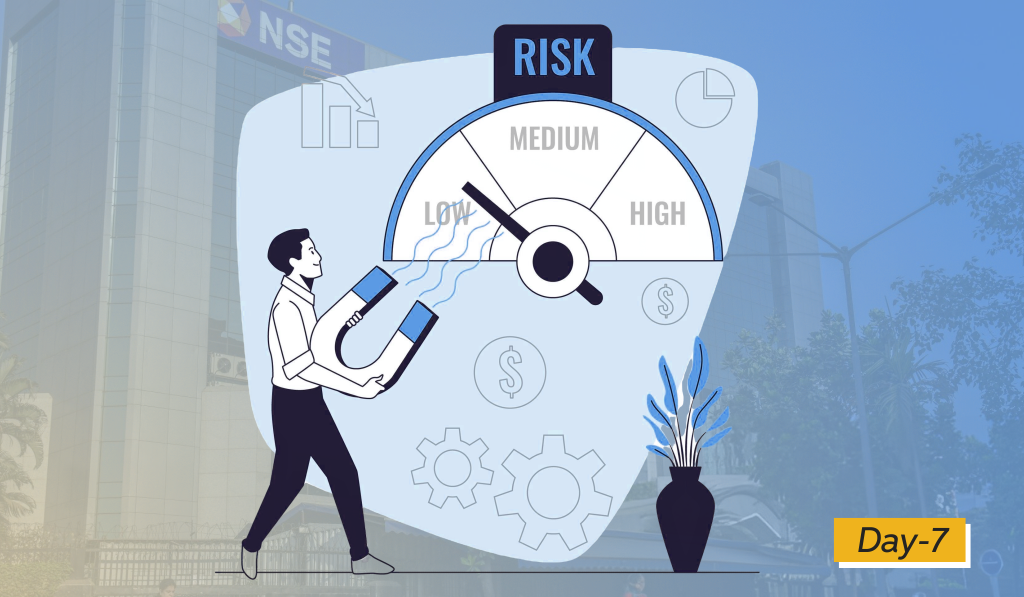What is stock selection & why it’s is important for us?
Stock selection is the process of identifying and choosing specific stocks to invest in, based on various criteria, to achieve investment goals. It involves analyzing and evaluating a company’s potential to generate returns.
This process considers a variety of factors, including the financial health of the company, the performance of the stock relative to the market, the industry the company is in, and supply and demand for the stock. Charts and other technical analysis tools can be used to identify potential buying and selling opportunities.
Stock selection is important for several reasons:
- Intelligent stock selection allows investors to take advantage of the growth opportunities in the market and increase their wealth.
- Investors with limited knowledge of the stock market may make poor investment choices and lose money.
- The returns from well-chosen stocks can help investors reach their financial goals and achieve financial security.
- Investors who carefully select stocks have a better chance of making a profit and avoiding losses.
- Selecting the right stocks at the right time is critical to maximizing profits.
- Investors must also be aware of the risks involved in stock investing and have a plan for mitigating those risks.
- This plan should include a strategy for cutting losses when a stock declines in price.
- Investors who follow a disciplined approach to stock selection are more likely to be successful in the long run.
How to select best stocks?
Here are some tips for selecting the best stocks to trade, based on the provided source:
- Look for market leaders: These companies have strong earnings and sales growth and are gaining market share. Institutional investors are interested in these companies because they are focused on future growth, not past price performance. Scalable growth, where a company gains market share in a rapidly expanding industry, is the best type of growth situation to look for.
- Consider stocks in a stage 2 uptrend: Almost every best stock experiences significant gains in stage 2 of its price cycle. A stage 2 advance is characterized by increasing earnings and sales, institutional buying, and increasing volume and price momentum. Look for stocks that are above their 150-day and 200-day moving averages, with the 150-day moving average above the 200-day moving average. You should also look for a series of higher highs and higher lows in the stock price, as well as evidence of increasing volume on up days and up weeks.
- Focus on earnings: Earnings are the most important factor to consider when selecting stocks. The best-performing stocks consistently show strong earnings growth. Look for companies that are reporting quarterly earnings surprises and that have positive earnings guidance.
- Follow the leaders: The best stocks tend to make their lows first and rebound the fastest from market corrections. Look for stocks that are making new 52-week highs in the early stages of a bull market. Avoid stocks that are making new 52-week lows.
- Use charts to help you time your trades: Charts can help you identify stocks that are under accumulation or distribution (being bought or sold in size). You can use charts to spot buying opportunities and to identify when it’s time to sell a stock. Look for consolidation periods, which are periods of rest or digestion where the stock’s price moves sideways. A constructive consolidation will show a contraction of volatility, accompanied by specific areas in the base structure where volume contracts significantly.
- Look for evidence of demand: You want to see increasing volume on up days and decreasing volume on down days. You should also look for big up days that occur more frequently than big down days.
- Consider the company’s fundamentals: While charts can be helpful in timing your trades, you should also consider the company’s fundamentals. Look for companies with strong earnings growth, a solid balance sheet, and a competent management team.
- Don’t be afraid to buy stocks that you’re not familiar with: Some of the best-performing stocks are companies that you may never have heard of before. Do your research and look for companies that are forming a primary base. A primary base is the initial consolidation period after a stock goes public.
- Manage your risk: This is the most important factor for success in the stock market. Use a stop-loss order to protect your profits and limit your losses. You should also diversify your portfolio and avoid putting all your eggs in one basket. Don’t let a loss exceed your average gain.
The sources contain a lot of useful information on how to select stocks. By following the tips in the sources, you can increase your chances of success in the stock market.
What are the most important factors you should consider while selecting the stocks ?
Earnings Growth: The Cornerstone of Stock Selection
The most important factor to consider when selecting stocks is earnings growth. The sources strongly emphasize the crucial role of earnings per share (EPS) as a key indicator of a company’s financial health and potential for price appreciation.
- Focus on Percentage Increase, Not Just Absolute Numbers: It’s not enough for a company to simply have positive earnings; the sources advocate for seeking companies with substantial percentage increases in EPS, both on a quarterly and annual basis. This growth demonstrates the company’s ability to consistently improve its profitability and outperform its past performance. Aim for companies with EPS increases of at least 25% to 50% or more, with even higher percentages being preferable.
- Avoid Misleading Earnings Reports: While EPS is a critical factor, it’s crucial to be wary of earnings reports that may be misleading due to one-time gains or accounting manipulations. Carefully analyze the company’s financial statements to ensure that the reported earnings growth is sustainable and not artificially inflated.
- Consider Sales Growth: Strong earnings growth should ideally be accompanied by robust sales growth. This indicates that the company is not solely relying on cost-cutting measures to boost profits but is also experiencing genuine demand for its products or services. Look for companies with sales growth of at least 25% in the latest quarter, and ideally an acceleration in sales growth over the past three quarters.
- Industry Group Comparison: When evaluating a company’s EPS growth, it’s important to consider its performance relative to other companies in the same industry group. A company may have impressive earnings growth in isolation, but it’s crucial to assess whether it’s outperforming or lagging behind its peers. This comparison provides valuable context for understanding the company’s competitive positioning and potential for future success.
It emphasizes that focusing on earnings growth helps investors identify the strongest companies in the market, regardless of prevailing market sentiment or speculative bubbles. By prioritizing companies with a consistent track record of substantial earnings increases, investors can position themselves to potentially reap the benefits of the company’s growth and achieve significant returns.










